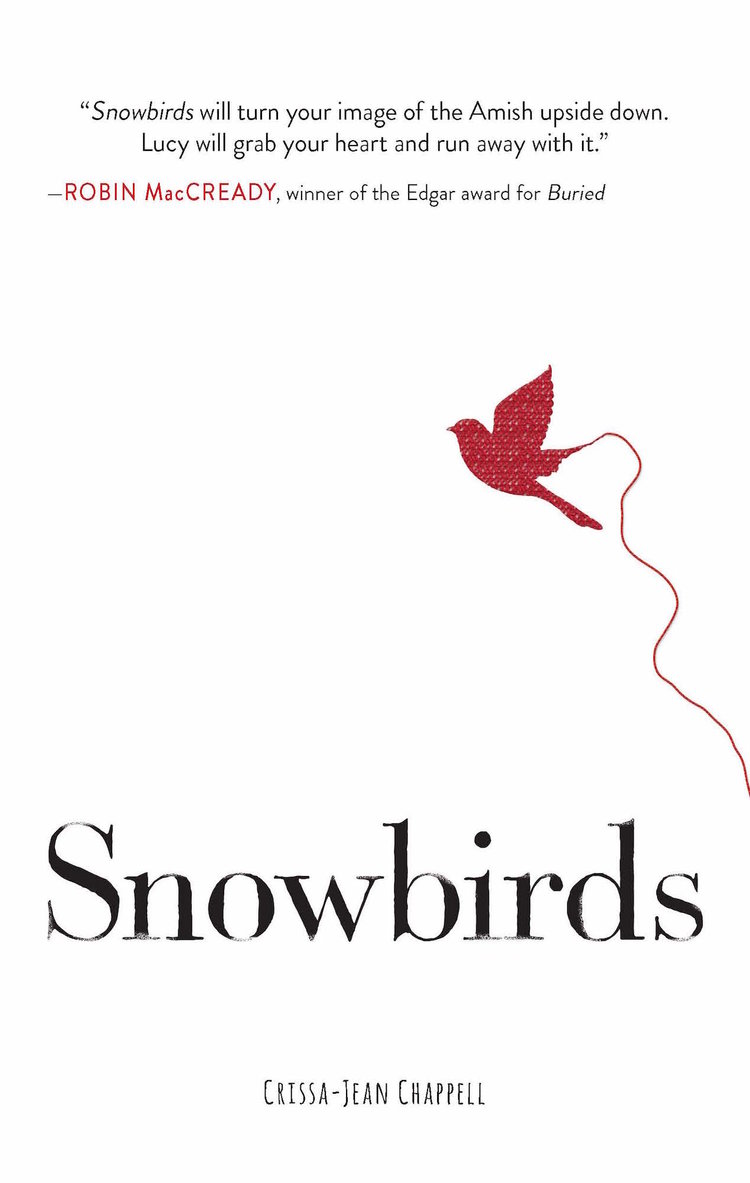
But, the thing is... while Snowbirds by Crissa-Jean Chappell does take place within Amish (and Mennonite) communities (and also differentiates twixt the two, for those readers who may be confused and think they're the same thing), it isn't really about being Amish. It's simply about being a teenager in a world where adults make the rules, and they feel too restrictive. Which is, as most people know, simply put--being a teenager. So, upon realizing this was likely the case from the book's description, I checked it out from the library. Though I completely understand the symbolism and aesthetic choices behind the cover design, and I feel they are appropriate to the story, they really aren't my cup of tea.
Though it may not seem, from the outset of the book, like protagonist Lucy has much freedom, her best friend and longtime penpal Alice doesn't see it that way. While Lucy is part of a Mennonite community in Florida, Alice comes down from the north every winter with her more conservative Old Order Amish mother. Alice is jealous of the pastel-colored dresses Lucy gets to wear, while Lucy is jealous that Alice can participate in Rumspringa. Neither actually has many choices of self-determination, but each is determined to carve her own path for herself, community opinions and rules be damned. So, when hard-partying rebel Alice goes missing, Lucy risks everything to find her.
Chappell provides an accurate and compelling picture of both Old Order Amish and Mennonite life, and shows the contrasts beautifully. Snowbirds feels as if it was written respectfully, while still posing questions about what such societies can truly offer young women, and how such communities can evolve to become more functional, instead of simply good-looking on the surface. The mood--stubborn piousness, suspicion of outsiders, quickness to shun--is conveyed well, and is the cornerstone upon which Snowbirds sits.
One of the most interesting relationships is that of Lucy and her dad. It provides a stark contrast to the sad well of dysfunction that is relationship between Alice and her mom. Even though things between Lucy and her dad are far from perfect, he seems to want good things for his daughter, and to desire to protect her. Alice's mom merely appears to care about her own reputation within the community.
Unfortunately, what could be a suspenseful plot--Lucy frantically investigating Alice's disappearance--is somehow turned into a slow, poetic amble, thanks to Chappell's snail-paced prose. Chappell puts a premium on flowery visual description, which frequently came at the price of holding my interest as a reader. At times, I felt like I was reading a bad parody of Walden, rather than a YA novel about a girl searching for her missing friend.
If you like pretty descriptions of nature infused with occasional faith or teenage-angst-based intrigue, Snowbirds is for you. If you get bored with suspense novels that don't drive steadily forward or annoyed with novels that feel stark with not altogether satisfying endings, Snowbirds by Crissa-Jean Chappell is one to skip.















